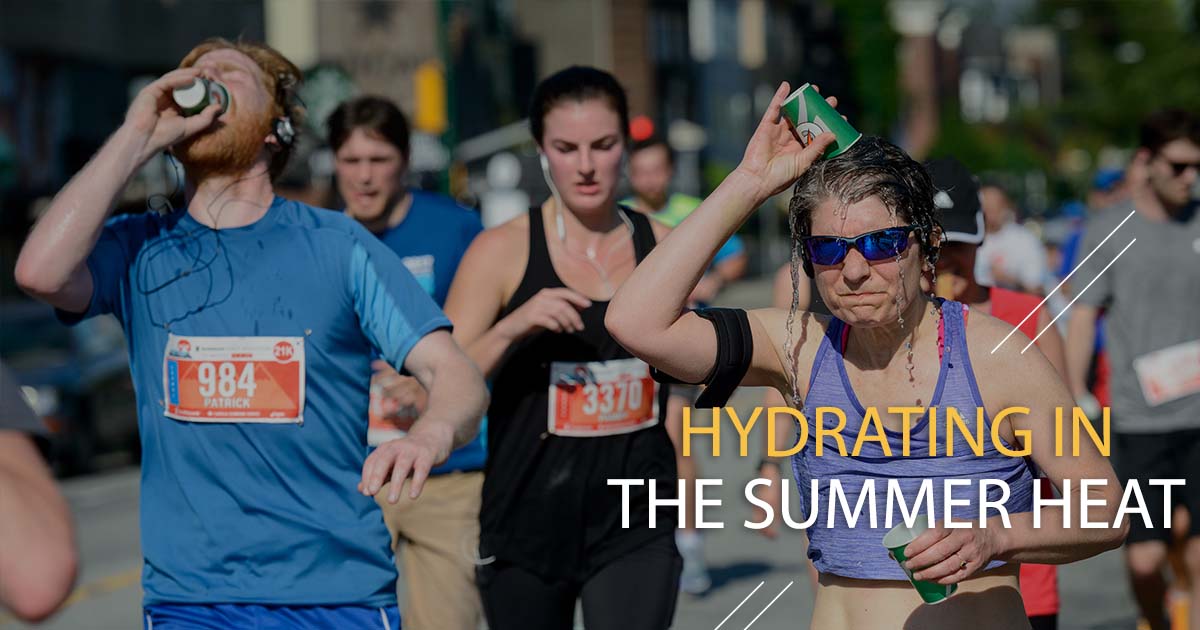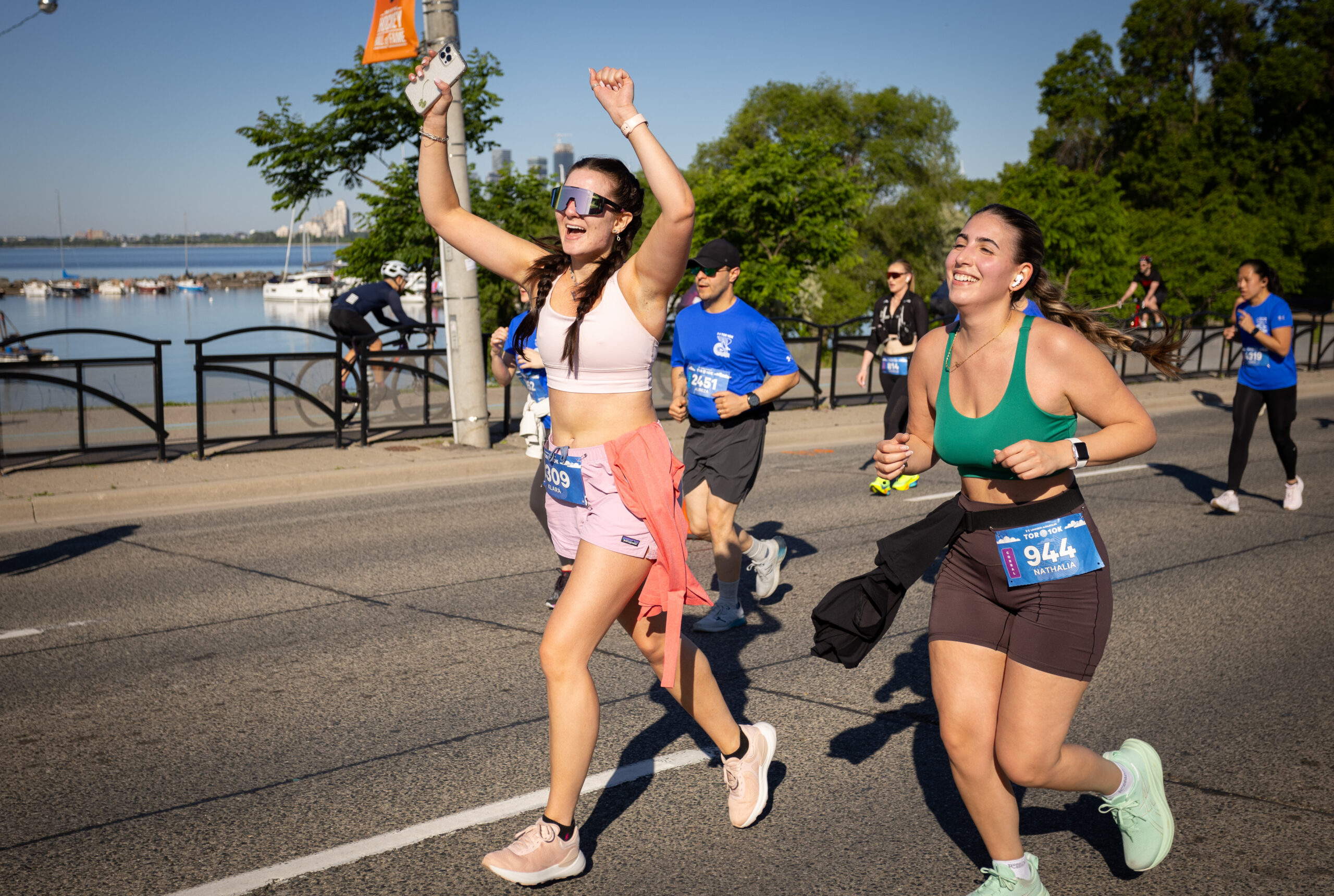
Hydrating becomes especially important in the summer when the temperatures rise. June and July temperatures can be quite variable, while August typically marks the hottest part of summer. A spike in temperatures leaves many of us unacclimatized. These high temperatures and humidity can make running feel especially tough. While there are benefits to training in the heat, it’s important to make sure you’re prepared before you hit the road. Hydration is usually the first thing that pops into people’s minds when they think about summer training.
How does training get affected?
Higher temperatures typically means higher sweat rates and therefore more water/electrolyte loss. One of the effects of fluid loss is a decreased blood volume. This means that your heart has to work harder to move blood through your body as it’s “thicker” than usual. By maintaining fluid intake, it keeps your blood volume regular and allows the body to efficiently cool itself by sending hot blood to the skin for heat evaporation via sweat.
Maintaining your hydration levels in the summer means drinking more water than you typically do during the rest of the year. If you’ve gone for a long run and have been sweating for hours on end, it’s likely that you’ve lost a fair amount of weight in body fluid. One way to check just how much you’ve lost is to step on the scale before a run, then upon your return check your weight again. Make sure to remove your soaked clothing so you have an accurate measurement! For every two pounds lost, replenish with 32 ounces of fluids.
Replenish with more than just water
Sweat is made up of more than just water, so losing a substantial amount of fluid requires rehydrating with water and electrolytes. Keeping a normal balance of electrolytes (sodium, chloride, potassium etc.) and water is crucial to maintain proper bodily functions. Which is why getting additional hydration through water-filled foods s another great way to stave off summer dehydration. Produce such as cucumbers, iceberg lettuce, celery, tomato, sweet peppers, and watermelon are comprised of up to 90% water. Add those into your daily meals and boost your hydration for the day!
Our bodies are incredibly smart and have the ability to tell us when we need water. Thirst is a sure sign your fluid consumption needs to increase. Drinking adequate amounts throughout the week, not just on workout days, reduces the risks of dehydration. Plus, by adopting a regular hydration routine it’ll inevitably make you have to go to the bathroom more frequently and therefore keep your legs moving before/after workouts. Keep an eye on your urine colour; aim to be light yellow, like the colour of lemonade. Anything other than that can indicate dehydration (if it’s darker), or dilution (if it’s clear).








